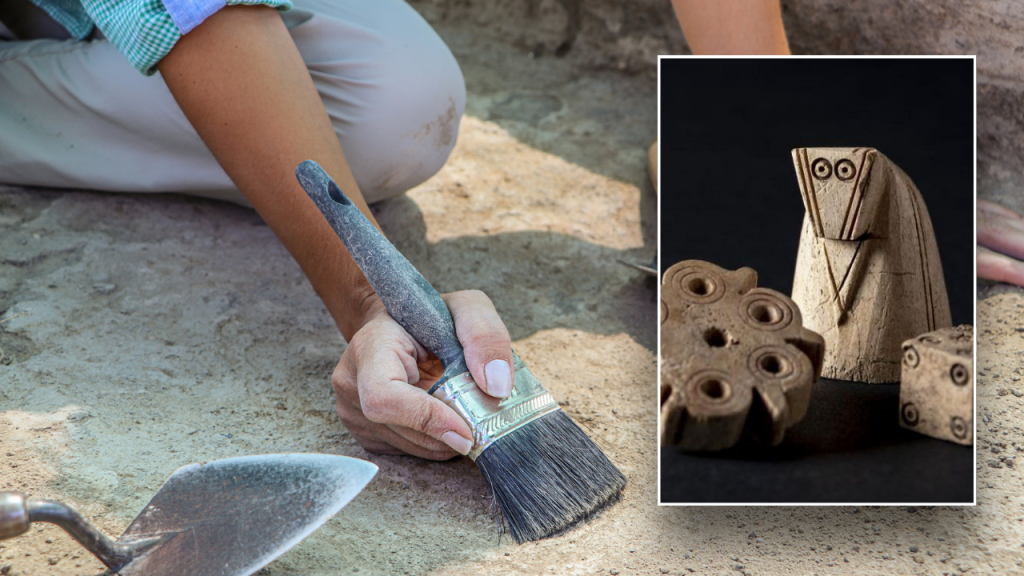Archaeologists in Germany recently announced the discovery of a game collection dating back 1,000 years. The findings were announced in a press release published by the University of Tübingen, the State Office for the Preservation of Monuments Baden-Württemberg (LAD), and the German Archaeological Institute (DAI). The game pieces were found at the site of a presumed castle in southern Germany in 2022. The collection includes flower-shaped game pieces, a dice with six eyes, and a horse chess piece, all carved from antlers. Some of the flower-shaped pieces have red paint residue, which researchers plan to chemically analyze.
The artifacts, believed to date back to the 11th or 12th centuries, were discovered hidden under debris at the site of what used to be a castle in Baden-Württemberg. Historians believe that the pieces were made shortly after chess was introduced to Europe. Medieval knights were expected to know how to play chess well, making it possible that the set belonged to a knight. Chess pieces from the early days of the game are very rare, and the intricate design of the horse figure found in the collection suggests it was a high-quality piece from that period.
The discovery of the game collection in the 11th/12th century came as a complete surprise to researchers. The horse-shaped knight piece found is considered a highlight of the collection. Dr. Jonathan Scheschkewitz, one of the archaeologists involved, explained that in the Middle Ages, chess was one of the seven skills that a good knight should master. This finding provides insight into the gaming world of the medieval nobility and the roots of European chess. The researchers hope that by analyzing the finds in detail, they will gain a better understanding of how games were played in medieval Europe.
The eyes and mane of the 4-centimeter-high horse figure found in the collection are vividly shaped, suggesting it was a particularly high-quality chess piece from that period. The elaborate design of the horse figure is typical of high-quality chess pieces from the early days of the game. The flower-shaped game pieces, dice, and chess pieces were found hidden under debris from a wall where they were lost or hidden in the Middle Ages. The red paint residue on some of the pieces will be chemically analyzed to provide more information about their origin and use.
Archaeologists are hopeful that the discovery of this game collection will help shed light on the history of games in medieval Europe. Chess was an important skill for knights in the Middle Ages, and the presence of a complete collection of gaming pieces is a rare find. This unexpected discovery provides valuable insights into the gaming world of medieval nobility and the significance of chess in European history. Through detailed analysis of the artifacts, researchers aim to learn more about the gaming practices of knights in the 11th and 12th centuries and the cultural importance of chess during that time.


